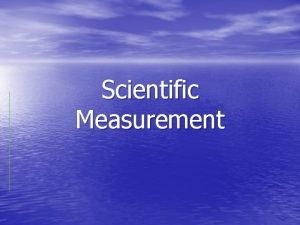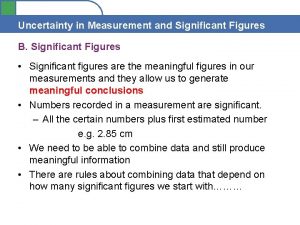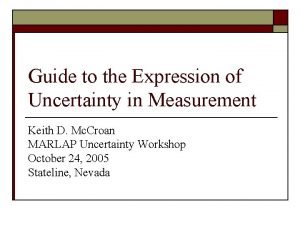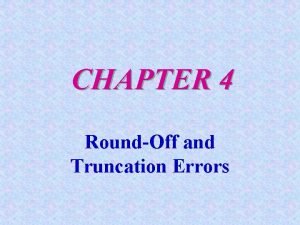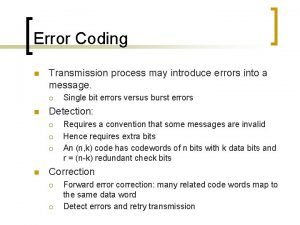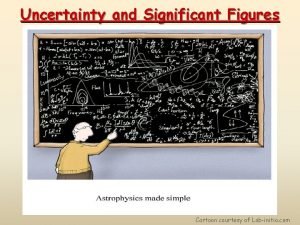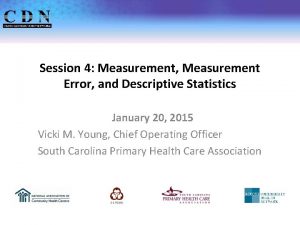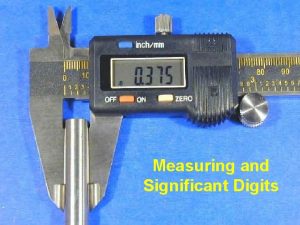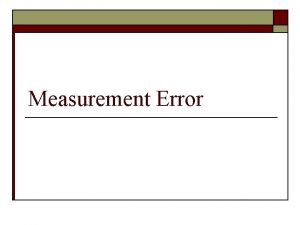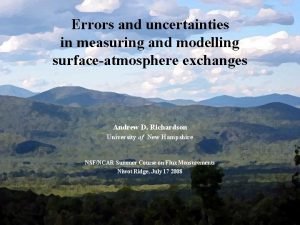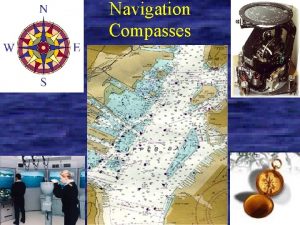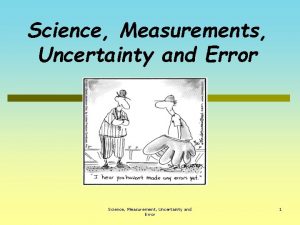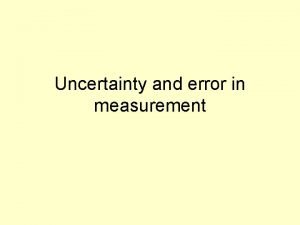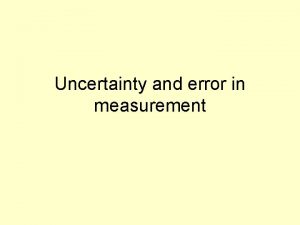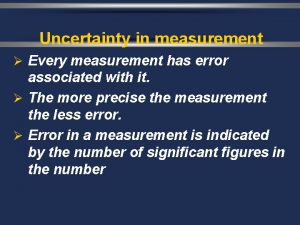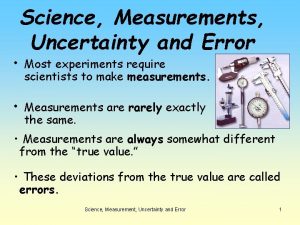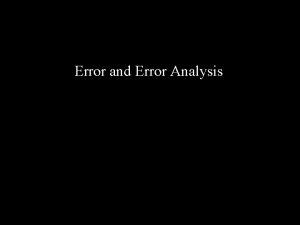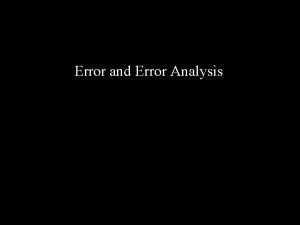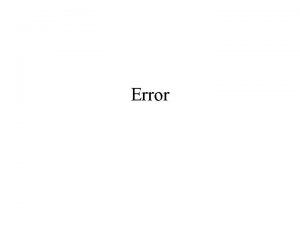Science Measurements Uncertainty and Error Science Measurement Uncertainty
















- Slides: 16

Science, Measurements, Uncertainty and Error Science, Measurement, Uncertainty and Error 1

Conversion Factor- Conversion of Units p A conversion factor is a ratio between two units: The conversion factor can be written with either value on top, just set it up so that units cancel out!

Example p How fast is 100 km/h in m/s? Write what you have… multiply by conversion factor(s)… 27. 777. . . m/s do the math… multiply the tops, multiply the bottoms, then divide these 2 #’s

Example p How fast is 50 mph in m/s? Write what you have… multiply by conversion factor(s)… do the math… multiply the tops, multiply the bottoms, then divide these 2 #’s 22. 3472 m/s

http: //smedia. vermotion. com/media/12933/resources/60000. JPG http: //www. gototem. com/Webgifs/Clip. Art/Sports/Darts. GIF

http: //smedia. vermotion. com/media/12933/resources/60000. JPG http: //www. gototem. com/Webgifs/Clip. Art/Sports/Darts. GIF

Dartboard analogy p Imagine a person throwing darts, trying to hit the bulls-eye.

Scientific Data Scientists always want the most precise and accurate experimental data. The precision and accuracy are limited by the instrumentation and data gathering techniques.

Dealing with Errors p Identify the errors and their magnitude. p Try to reduce the magnitude of the error. HOW? n n n Better instruments Better experimental design Collect a lot of data

Counting Sig Fig’s – 4 Rules: 1. 2. 3. 4. Nonzero digits are always significant All final zeros after the decimal point are significant Zeros between two other significant digits are always significant Zeros used solely as placeholders are not significant

Counting Sig Fig’s – Sci. Notation Use Scientific Notation… p Determine how many digits are important when writing the number in scientific notation. p

How many significant figures? 1, 460 726. 01 21. 76 720 421. 03 4. 801 . 002 0. 103 1, 000. 1 0. 000827 1. 47 1, 200, 000. 0 120 4. 60

How do you round? p Rounding is different, depending on whether you are n n adding or subtracting OR multiplying or dividing

Adding/Subtracting Add/Subtract first p Round according to the fewest number of Digits After the Decimal p Multiplying/Dividing Multiply/Divide first p Round according to the fewest number of Significant Figures p

Examples: 286. 9 2. 251 507. 8

Examples: 12, 000 92 380
 Measurements and their uncertainty answer key
Measurements and their uncertainty answer key Uncertainty in measurement and significant digits
Uncertainty in measurement and significant digits Guide to the expression of uncertainty in measurement
Guide to the expression of uncertainty in measurement Type 1 type 2 error power
Type 1 type 2 error power Top pan balance zero error
Top pan balance zero error Difference between round-off error and truncation error
Difference between round-off error and truncation error Crc example
Crc example Define absolute error
Define absolute error Significant figures cartoon
Significant figures cartoon 4 scales of measurement
4 scales of measurement Direct measuring tools
Direct measuring tools Measurement error types
Measurement error types What is parallax error in measurement
What is parallax error in measurement Error of measurement
Error of measurement Systematic and random error
Systematic and random error Type 2 vs type 1 error
Type 2 vs type 1 error Gyro error examples
Gyro error examples
